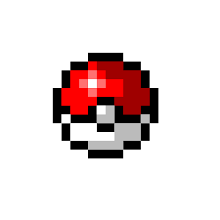"Damage Over Time Plots, Fully-Evolved Pokémon"
#PokemonGO: Plots: http://ift.tt/2bV8SSY for download: http://ift.tt/2brocde(They’re not in order on imgur and I don’t feel like reordering them, google drive ones are named according to the species. I’m also more likely to keep the ones on my google drive up to date in the event of another move/mechanics patch)I felt that in order to truly understand which moveset was best for a Pokemon in a given situation, you have to look at more than just the DPS extrapolated from a 100s or infinitely long battle. Actual Damage is ‘bursty’, with charge moves causing some movesets to be higher damage dealing for battles of certain lengths, while not being the highest damage option for 100s long battles. In order to make decisions with this in mind, I generated a plot of damage over time for every moveset on every available, fully-evolved Pokémon in the game. I did this by essentially writing an attacking simulator in MATLAB and logging the results. STAB is factored in, crits are not as they’re not currently implemented.Please note that these plots are only useful for comparison within a given species. Between two different species you actually care about damage multiplied by attack, not raw damage. I’ll be using these results to make tables of the top attackers by type damage, for different length battles, very shortly.The assumptions I made and why you should or shouldn’t care:All moves take exactly their duration to perform, with the next move immediately following it. In actuality there should be a small user induced error before every move use. I have not been able to characterize this error yet (video analysis planned) and choosing an arbitrary one seemed more harmful than just releasing the plots without it. The longer the user error, the better performing long duration moves will be relative to short ones. IE, fire blast is more appealing than flamethrower because you end upusing the move fewer times and user error is compounded less often.Damage occurs at a steady rate during the damage window, and the damage window occurs at the beginning of the attack duration. The damage window almost certainly doesn’t occur at the beginning of the attack duration, but this has negligible impact on the results. Where the damage actually occurs during the attack duration has very little impact on these results though, maybe changing where one moveset passes another for damage by a couple seconds. Blizzard is modeled to have its’ damage happen instantly (0 second window).No energy is gained from losing HP. This one is just false, BUT it’s highly dependent on the opponent, and both of your levels and stats. I couldn’t figure out a reasonable way to include it in the analysis. Energy gained will obviously improve movesets with charge attacks over the movesets with only fast attacks, and I expect it to improve movesets with high energy cost moves more.Charge attacks are used as soon as the pokemon has enough energy to do so. In actuality you may wait so you can dodge an opposing pokemon don’t. My simulated pokemon don’t. They like to do damage.I believe those are all the assumptions I made, but I’ll edit this if I think of any more. If you have any questions or concerns with the results/methodology, please let me know. via /r/TheSilphRoad http://ift.tt/2bI7imA
"Damage Over Time Plots, Fully-Evolved Pokémon"
!["Damage Over Time Plots, Fully-Evolved Pokémon"]() Reviewed by The Pokémonger
on
22:49
Rating:
Reviewed by The Pokémonger
on
22:49
Rating:


No comments